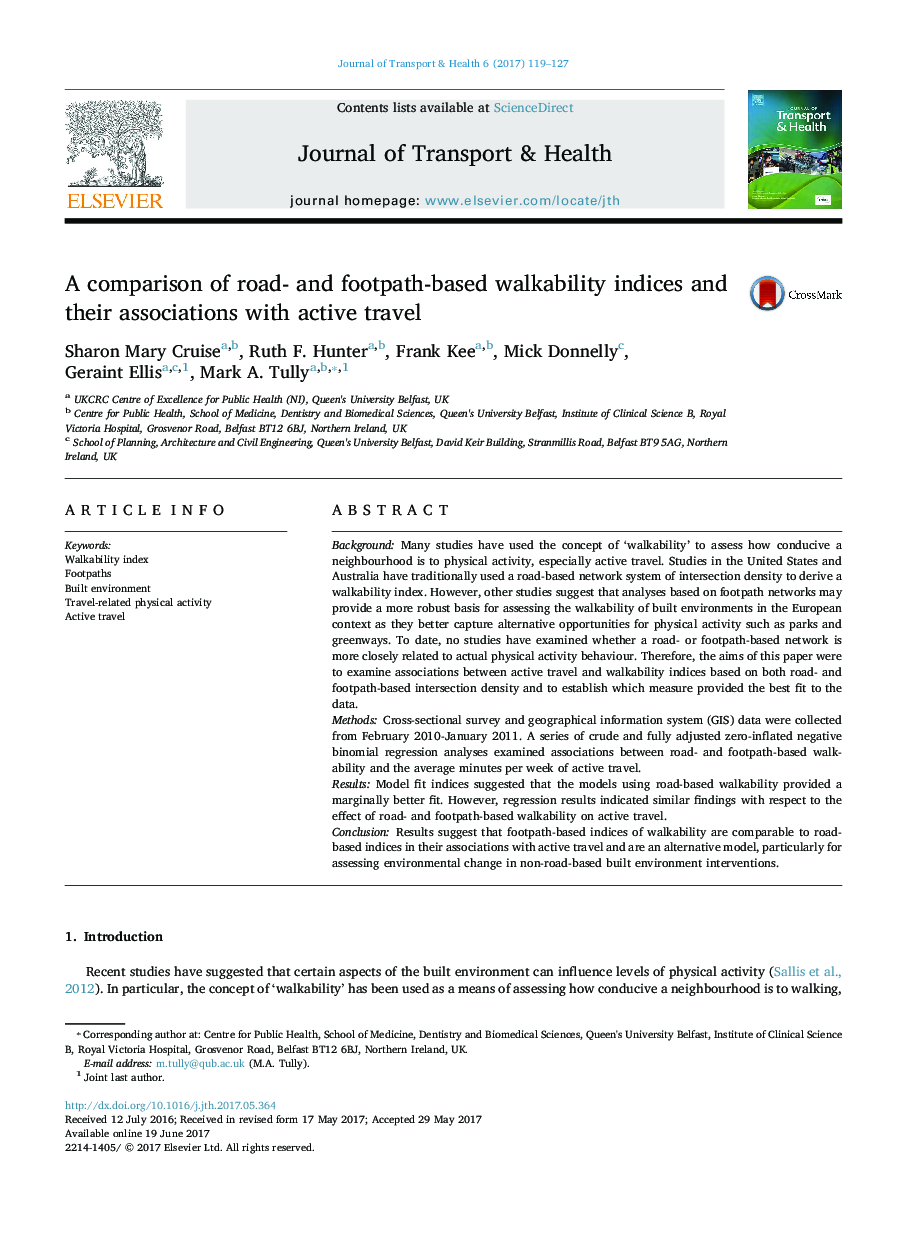| کد مقاله | کد نشریه | سال انتشار | مقاله انگلیسی | نسخه تمام متن |
|---|---|---|---|---|
| 5117649 | 1485455 | 2017 | 9 صفحه PDF | دانلود رایگان |
- First study using both road- and footpath-based walkability to examine active travel.
- Results indicated that the two measures performed comparably.
- Footpath-based walkability is acceptable alternative to road-based walkability.
- Method has key implications for non-road-based environmental change interventions.
BackgroundMany studies have used the concept of 'walkability' to assess how conducive a neighbourhood is to physical activity, especially active travel. Studies in the United States and Australia have traditionally used a road-based network system of intersection density to derive a walkability index. However, other studies suggest that analyses based on footpath networks may provide a more robust basis for assessing the walkability of built environments in the European context as they better capture alternative opportunities for physical activity such as parks and greenways. To date, no studies have examined whether a road- or footpath-based network is more closely related to actual physical activity behaviour. Therefore, the aims of this paper were to examine associations between active travel and walkability indices based on both road- and footpath-based intersection density and to establish which measure provided the best fit to the data.MethodsCross-sectional survey and geographical information system (GIS) data were collected from February 2010-January 2011. A series of crude and fully adjusted zero-inflated negative binomial regression analyses examined associations between road- and footpath-based walkability and the average minutes per week of active travel.ResultsModel fit indices suggested that the models using road-based walkability provided a marginally better fit. However, regression results indicated similar findings with respect to the effect of road- and footpath-based walkability on active travel.ConclusionResults suggest that footpath-based indices of walkability are comparable to road-based indices in their associations with active travel and are an alternative model, particularly for assessing environmental change in non-road-based built environment interventions.
Journal: Journal of Transport & Health - Volume 6, September 2017, Pages 119-127
